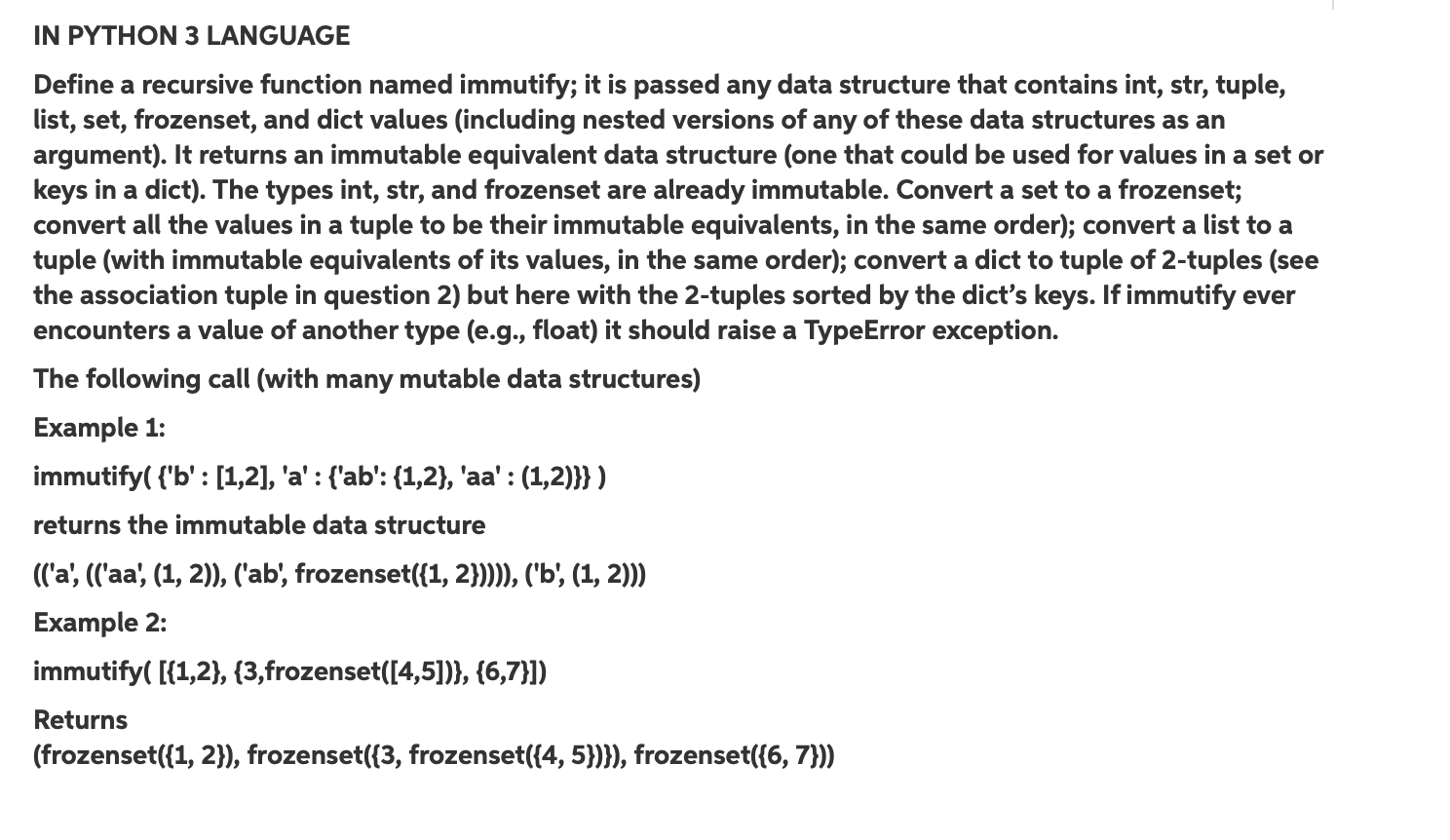Answered step by step
Verified Expert Solution
Question
1 Approved Answer
recursively and no for loops and local variable def immutify (a : 'an int , str , list, tuple, set, or dict ' ) ->
recursively and no for loops and local variable

def immutify(a : 'an int, str, list, tuple, set, or dict') -> 'an int, str, tuple, or forzenset':
IN PYTHON 3 LANGUAGE Define a recursive function named immutify; it is passed any data structure that contains int, str, tuple, list, set, frozenset, and dict values (including nested versions of any of these data structures as an argument). It returns an immutable equivalent data structure (one that could be used for values in a set or keys in a dict). The types int, str, and frozenset are already immutable. Convert a set to a frozenset; convert all the values in a tuple to be their immutable equivalents, in the same order); convert a list to a tuple (with immutable equivalents of its values, in the same order); convert a dict to tuple of 2-tuples (see the association tuple in question 2) but here with the 2-tuples sorted by the dict's keys. If immutify ever encounters a value of another type (e.g., float) it should raise a TypeError exception. The following call (with many mutable data structures) Example 1: immutify( {'b': [1,2], 'a': {'ab': {1,2}, 'aa': (1,2)}}) returns the immutable data structure (('a', (l'aa', (1, 2)), ('ab', frozenset({1, 2})))), ('b', (1, 2))) Example 2: immutify( [{1,2}, {3, frozenset([4,5])}, {6,7}]) Returns (frozenset({1, 2}), frozenset({3, frozenset({4,5})}), frozenset({6, 7}))Step by Step Solution
There are 3 Steps involved in it
Step: 1

Get Instant Access to Expert-Tailored Solutions
See step-by-step solutions with expert insights and AI powered tools for academic success
Step: 2

Step: 3

Ace Your Homework with AI
Get the answers you need in no time with our AI-driven, step-by-step assistance
Get Started


